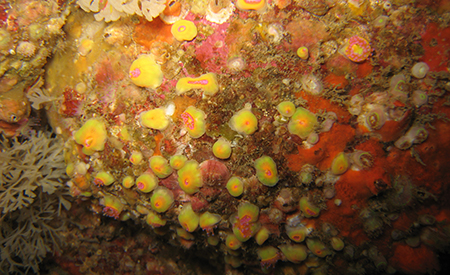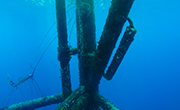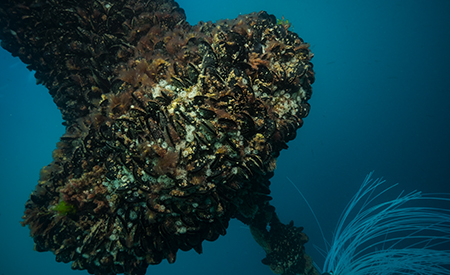Ocean thermal energy
Type of resources
Available actions
Topics
Keywords
Contact for the resource
Provided by
Formats
status
-

To reduce the number of interventions and maintenance operations, it is necessary to monitor the proliferation of marine fouling in real time and over a long period. This is why it is necessary to have an in situ optical video system that is protected for as long as possible against biocolonisation.
-

Monitoring data on biomass (fresh weight in air and water), biovolume, thickness.
-

The objective of the ANODE project was to quantify the chemical compounds emitted by the galvanic anodes of ORE structures and the risk associated with their dispersion in the marine environment. By combining ecotoxicological expertise and hydrodynamic modelling, the ANODE project has determined that there is no risk associated with most of the elements making up galvanic anodes, namely zinc, iron, copper and cadmium. On the other hand, concerning aluminium, additional experiments are necessary to conclude. The two currently available Predicted No-Effect Concentrations (PNECs) do not seem suitable for this assessment. These thresholds must therefore be refined and include data from in situ measurements in order to be able to estimate the possible risk associated with aluminium releases.
-

Report on the assessment of the chemical risk of aluminum-based galvanic anodes on the environment
-

The objectives of the ABIOP+ project were to : • Provide characterisation protocols for biofouling on cable and mooring lines materials which are very vulnerable to this biological process, in order to collect quantitative in-situ data. • Inventory existing fouling management methods and test the solutions best suited for floating offshore wind turbines.
-

The objective of the ABIOP project was to develop biofouling characterisation and quantification methods to make the design and maintenance of ORE systems more reliable. ABIOP has identified the research needs that will enable better identification and management of the risks relating to the ORE components most sensitive to biofouling. Initial in situ measurements were also carried out to characterise biocolonisation in the Atlantic and Mediterranean from an engineering and environmental point of view. The necessary additional studies are being carried out within the framework of the ABIOP+ project.
-

Numerical simulations applied on the study sites
-
The consequences of climate change for marine organisms are now well-known, and include metabolism and behavior modification, distribution area shifts and changes in the community. In the Bay of Biscay, the potential environmental niches of subtropical non-indigenous species (NIS) are projected to expand as a response to sea temperature rise by the mid-century under the RCP8.5 climate change scenario. In this context, this study aims to project the combined effects of changes in indigenous species distribution and metabolism and NIS arrivals on the functioning of the Bay of Biscay trophic network. To do this, we created six different Ecopath food web models: a “current situation” trophic model (2007–2016) and five “future” trophic models. The latter five models included various NIS biomass combinations to reflect different potential scenarios of NIS arrivals. For each model, eight Ecological Network Analysis (ENA) indices were calculated, describing the properties of the food web resulting from the sum of interactions between organisms. Our results illustrate that rising temperature increases the quantity of energy passing through the system due to increased productivity. A decrease in the biomass of some trophic groups due to the reduction of their potential environmental niches also leads to changes in the structure of the trophic network. The arrival of NIS is projected to change the fate of organic matter within the ecosystem, with higher cycling, relative ascendency, and a chain-like food web. It could also cause new trophic interactions that could lead to competition and thus modify the food-web structure, with lower omnivory and higher detritivory. The combined impacts (increasing temperatures and NIS arrivals) could lower the resilience and resistance of the system.
-

Backup of the data used for characterising the different biofouling monitoring protocols in an excel file.
-

The main objective of this atlas is to summarise the knowledge acquired on biofouling, and more generally on communities of living organisms on hard substrates, available today in mainland France and the French overseas territories, in order to anticipate the issues that this phenomenon will pose in an ORE context. The atlas is based on the most exhaustive bibliographical analysis possible, including A-level scientific articles, reports (training courses, monitoring, studies), and works presenting the results of studies conducted in French waters
 Catalogue PIGMA
Catalogue PIGMA